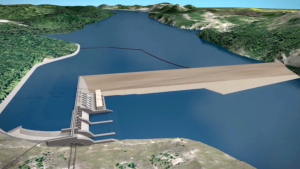Northeast BC needs natural gas recovery to bolster regional economy, say provincial accountants
Higher natural gas, coal, lumber prices good news, but offset by capital investment uncertainty
The economy of northeast British Columbia, particularly in Dawson Creek and Fort St. John, has taken a beating the past few years, according to the annual economic report by provincial chartered accountants. And only a revival of the resource sector, led by oil and natural gas, is likely change things for the better.
 “Last year was one of the most challenging in recent history. There was a significant slowdown in major project development activity and our unemployment rate jumped to 9.7 per cent, the highest rate in at least 15 years,” said Ben Sander, partner at Sander Rose Bone Grindle LLP in Dawson Creek, in a release accompanying the Chartered Professional Accountants of British Columbia’s Regional Check-Up.
“Last year was one of the most challenging in recent history. There was a significant slowdown in major project development activity and our unemployment rate jumped to 9.7 per cent, the highest rate in at least 15 years,” said Ben Sander, partner at Sander Rose Bone Grindle LLP in Dawson Creek, in a release accompanying the Chartered Professional Accountants of British Columbia’s Regional Check-Up.
“This was due to 1,000 job losses and an increase of 1,700 unemployed people in the region. In addition, delayed investment decisions in oil and gas projects have worn away any optimism about the near-term future of our economy.”
Slower activity in the natural gas sector and uncertainty over proposed major projects related to liquified natural gas stalled economic activity in the region.
Despite many promises of by the Liberal government of Christy Clark during the 2013 BC election, only a $400 million expansion of FortisBC’s Tillbury plant and the $1.8 billion Woodfibre facility near Squamish, BC are going ahead. Both projects will draw natural gas from northeast BC.
Major project investments in the northeast region fell by 2.8 per cent to $37.4 billion over the past year, according to the report.
Jobs were lost in some of the region’s key industries, including construction, transportation and warehousing, and trade. Collectively, these industries lost 2,900 jobs in 2016.
However, there were some bright spots in the region’s labour market. The forestry, fishing, mining, oil and gas industry created 1,300 new jobs in 2016, with half of these created in the oil and gas industry.
But the Vancouver ban on natural gas consumption will probably lower demand for the northeast BC product. The Zero Emissions Building Plan was adopted last July to “to aggressively combat and reduce carbon pollution” in the city’s building stock.
Christy Clark promised during the recent election campaign that if the Liberals were re-elected, the de facto natural gas ban that is part of the plan would be overturned in short order.
“BC Liberals will ensure that natural gas remains an energy option for residents, restaurants and businesses in the City of Vancouver,” Vancouver-Quilchena Liberal candidate Andrew Wilkinson said in a press release during the campaign.
The hung election, however, has created uncertainty about both overturning the natural gas ban.
“As regional service hubs with the most diversified economies in the region, both Fort St. John and Dawson Creek have seen job creation from activities on Site C and the Montney Formation projects, as well as construction on a number of smaller infrastructure investments,” continued Sander.
BC Hydro’s Site C dam project was a contentious issue during the campaign. BC NDP leader John Horgan and Green Party leader Andrew Weaver signed a minority government support agreement days after the election and one of the key issues was pausing Site C and referring it to the BC Utilities Commission for a comprehensive review, which many observers took to mean the project would be abandoned.
Even though coal has been under fire lately, an uptick in international demand led to good news for several towns.
“The re-opening of two coal mines late last year also restored some jobs in the communities of Tumbler Ridge and Chetwynd.”
Towards the latter half of 2016 coal prices recovered and there was a growing demand for lumber, which were positive developments, according to Sander.
Price forecasts for Northeast B.C.’s principal commodities – natural gas, coal, and lumbe – are trending positively for 2017 and 2018, which should have a correlating positive impact on the economy.
During the first quarter of 2017, total employment in Northeast B.C. increased by 700 jobs.
“Improved commodity prices should help recover some of the jobs lost last year. However, it may be a while before our economy fully bounces back. The US tariff on softwood lumber, as well as uncertainty over natural gas prices and trade negotiations with the US and other countries will continue to dampen our economic outlook for the foreseeable future,” said Sander.










